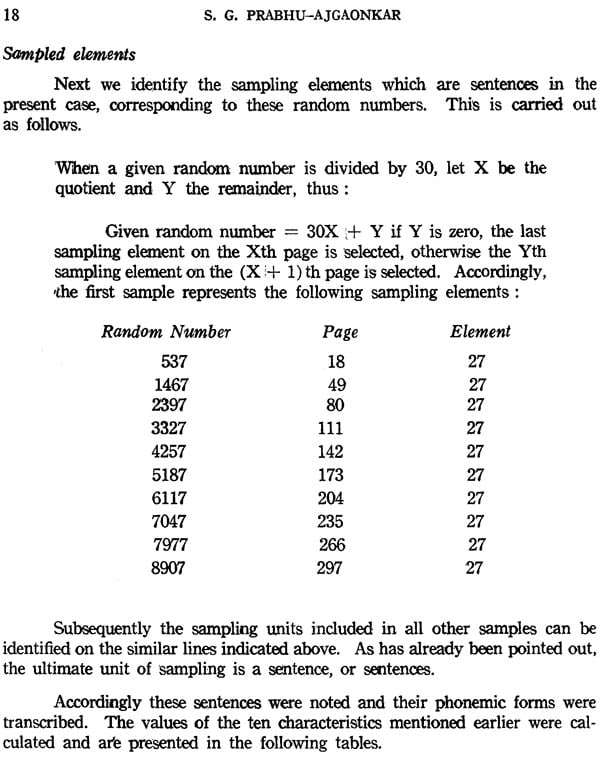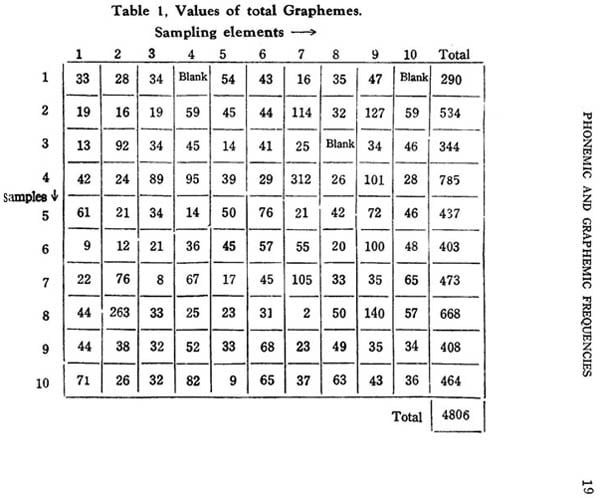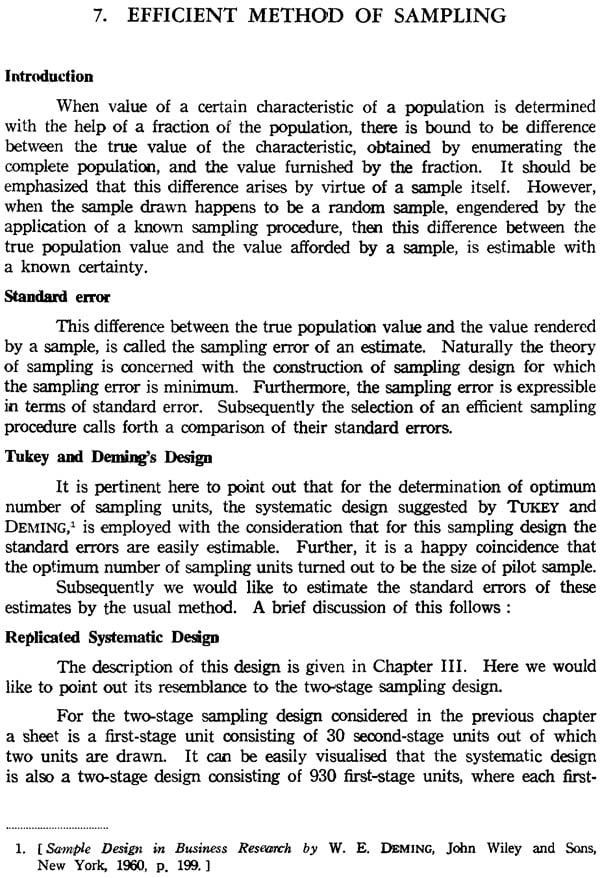
Determination of Phonemic and Graphemic Frequencies by Sampling Techniques (An Old and Rare Book)
Book Specification
| Item Code: | NAM077 |
| Author: | S. G. Prabhu Ajgaonkar |
| Publisher: | Deccan College Postgraduate and Research Institute |
| Language: | English |
| Edition: | 1969 |
| Pages: | 64 |
| Cover: | Paperback |
| Other Details | 10.0 inch x 7.5 inch |
| Weight | 140 gm |
Book Description
On the 15th of October 1964 the Deccan College celebrates the centenary of its main Building, and curiously enough this period coincides with the Silver Jubilee of the Postgraduate and Research Institute which, as successor to the Deccan College, started functioning from 17th August 1939 when members of the teaching faculty reported on duty. When I suggested to members of our faculty the novel idea that the centenary should be celebrated by the publication of a hundred monographs representing the research carried on under the auspices of the Deccan College in its several departments they readily accepted the suggestion. These contributions are from present and past faculty members and research scholars of the Deccan College, giving a cross-section of the manifold research that it has sponsored during the past twentyfive years. From small beginnings in 1939 the Deccan College has now grown into a well developed and developing Research Institute and become a national centre in so far as Linguistics, Archaeology and Ancient Indian History, and Anthropology and Sociology are concerned. Its international status is attested by the location of the Indian Institute of German Studies (jointly sponsored by Deccan College and the Goethe Institute of Munich), the American Institute of Indian Studies and a branch of the Ecole Francaise d’Extreme-Orient in the campus of the Deccan College. The century of monographs not only symbolises the centenary of the original building and the silver jubilee of the Research Institute, but also the new spirit of critical enquiry and the promise of more to come.
The present study is an inter-disciplinary one calling forth a harmonious co-ordination of the two disciplines, namely, Linguistics and Statistics. Therefore, as far as possible, the elementary notions incorporated into the present study are explained. However, the continuity of the theme has made it necessary to provide explanations of some of these at their subsequent occurrences, where their explanations of some of these terms at their subsequent occurrences, where their presence is conspicuously felt. Naturally, in getting information about a term, the index is of great help.
The first chapter gives definitions of phonemes and graphemes and some of the uses of their frequencies.
Chapter II presents a succint description of the numerous studies carried out in the past to determine phonemic and graphemic frequencies of several languages. It is to be noted that the choice of these studies is arbitrary.
Chapter III sets out to explain the statistical nature of the problem along with the objectives of the present study and the universe to which the present study refers.
Chapter IV is statistical in nature and is devoted to determine the optimum number of sampling units. For this purpose, a pilot sample is drawn by employing the replicated systematic sampling system suggested by TUKEY and popularised by DEMING. Evidently the estimates of standard errors appearing in the formula of optimum number of sampling units are readily available.
Chapter V and VI examine the applications of the simple random sampling system and the two-stage sampling system.
Consequently the present study considers the following three sampling procedures:
(1) A replicated systematic sampling,
(2) the simple random sampling, and
(3) the two-stage sampling,
where the target population consists of graphemes on the sheets of a connected matter while the sampled population is composed of samping elements. A sampling element may be
(1) a sentence on a sheet,
(2) two sentences on a sheet, or
(3) a blank.
Chapter VII presents a comparison of the standard errors for the ten characteristics considered in the present study, and demonstrates that in a majority of cases the two-stage sampling is the best sampling procedure.
Furthermore, the present study points out that a sample o 600 words or approximately 4,000 phonemes is adequate for the purpose of determining the phonemic and graphemic frequencies, since, the results derived in the present study are in general consistent with those of the previous studies carried out with approximately 5 lakh phonemes (i.e. one lakh words) and with 20,000 phonemes.
In the first place, I am indebted to Dr. S. M. KATRE, Director, Deccan College Postgraduate and Research Institute, for encouragement and also for a subvention carried out at the Statistical Service Unit, Department of Statistics, University of Poona.
I have to thank many persons for helping me in the completion of the present study.
In connection with this study, I acknowledge with pleasure the encouraging discussion I had, on linguistic theory, with the following persons:
Professor P. B. PANDIT, Professor A. M. GHATAGE, Professor N.G. KALELKAR, Professor A.R. KELKAR, Professor C. R. SANKARAN and Mr. M. D. BALASUBRAMANYAM.
Thanks are due to Professor A.R. KELKAR for going through the first chapter and making many useful suggestions, to Dr. M. G. PANSE for helpful comments on the Marathi version of the sampled material.
Further, I would like to thank Dr. S. R. ADKE and Mr. S. W. JOSHI of the Department o Statistics, University of Poona for the lively discussions on statistical theory utilised in the present study.
| Foreword | ||
| Freface | ||
| 1 | Phonemes, Graphemes and Uses of their Frequencies | 1 |
| 2 | A Review of Some of the Past Studies | 5 |
| 3 | The Statisti10cal Nature of the Problem and the Present Study | 10 |
| 4 | The Optimum Number of Sampling Units | 14 |
| 5 | Application of Simple Random Sampling Procedure | 34 |
| 6 | Application of Two-stage Sampling Procedure | 40 |
| 7 | Efficient Method of Sampling | 47 |









